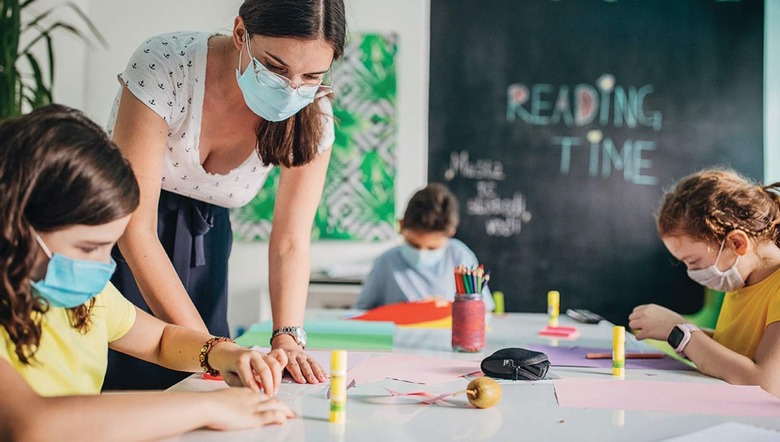The CDC just changed classroom social distancing rules
The US CDC has updated its COVID-19 guidelines for schools, halving the recommended social distancing between children as attempts to get classrooms up and running again continue. Until now, the advice from the Centers for Disease Control and Prevention has been to maintain the same six feet of distance between students as is recommended for the general public.
That's proved a major practical issue for schools, as well as a controversial topic among experts where opinions on how at-risk young people are to COVID-19 continues to be debated. Most schools simply don't have the space to spread out students to meet the 6 feet guidance, and it appeared that virtual or hybrid lessons – delivered either remotely via Zoom classes, or in a mixture of virtual and in-person classes with student groups split to reduce on-site numbers – would end up continuing through to the summer.
Now, in an update to the official school recommendations, new spacing of just 3 feet is being advised. According to the CDC, citing the "preponderance of the available evidence form US schools," the tempering of the guidance would only cover positioning of young people themselves.
When they were around a teacher, meanwhile, or in unmasked groups – such as during lunch periods, or when exercising or singing – the existing 6 foot guidance stands.

"These updated recommendations provide the evidence-based roadmap to help schools reopen safely, and remain open, for in-person instruction," Rochelle Walensky, CDC Director, said in a statement about the changes. Masks are still the status-quo for children in school, and the guidance changes if the school is located in a "red zone" area where COVID-19 rates are at their highest.
In such cases, middle- and high-school aged children should be split into smaller groups, the CDC recommends. Younger, elementary-aged children are considered less likely to be a coronavirus infection spread risk. If dividing the older students into smaller cohorts isn't possible, the CDC warns, then the 6 feet guidance still stands in "red zone" schools.
According to the CDC, "the preponderance of the available evidence from U.S. schools indicates that even when students were placed less than 6 feet apart in classrooms, there was limited SARS-CoV-2 transmission when other layered prevention strategies were consistently maintained."
However, the risks around teaching staff remain higher. "Several studies have found that transmission between staff is more common than transmission between students and staff, and among students, in schools," the CDC said today.
The agency has encountered push-back over its stance on vaccinations in recent months. Teachers unions had reacted with concern at the suggestion that vaccinations among teaching staff were not necessarily a required step before schools could resume in-person classes. Yesterday, President Biden announced that the "100 Million Shot Goal" – of administering 100 million COVID-19 vaccination shots within the first 100 days of his time in the White House – would be completed early, after 58 days.
"Using the power given to a President under the Defense Production Act, we expedited critical materials in vaccine production, such as equipment, machinery, and supplies," Biden said in a statement. "We worked with vaccine manufacturers to speed up the delivery of millions more doses and brokered a historic manufacturing partnership between competing companies who put patriotism and public health first. These steps put us on track to have enough vaccine — enough vaccine supply for every adult American by the end of May — months — months earlier than anyone expected."
According to the CDC tracker, there have been more than 376,400 cases of COVID-19 in the US in the last seven days. If the current rate of growth continues, the US is on track to pass the 30 million case mark by the end of this month.
